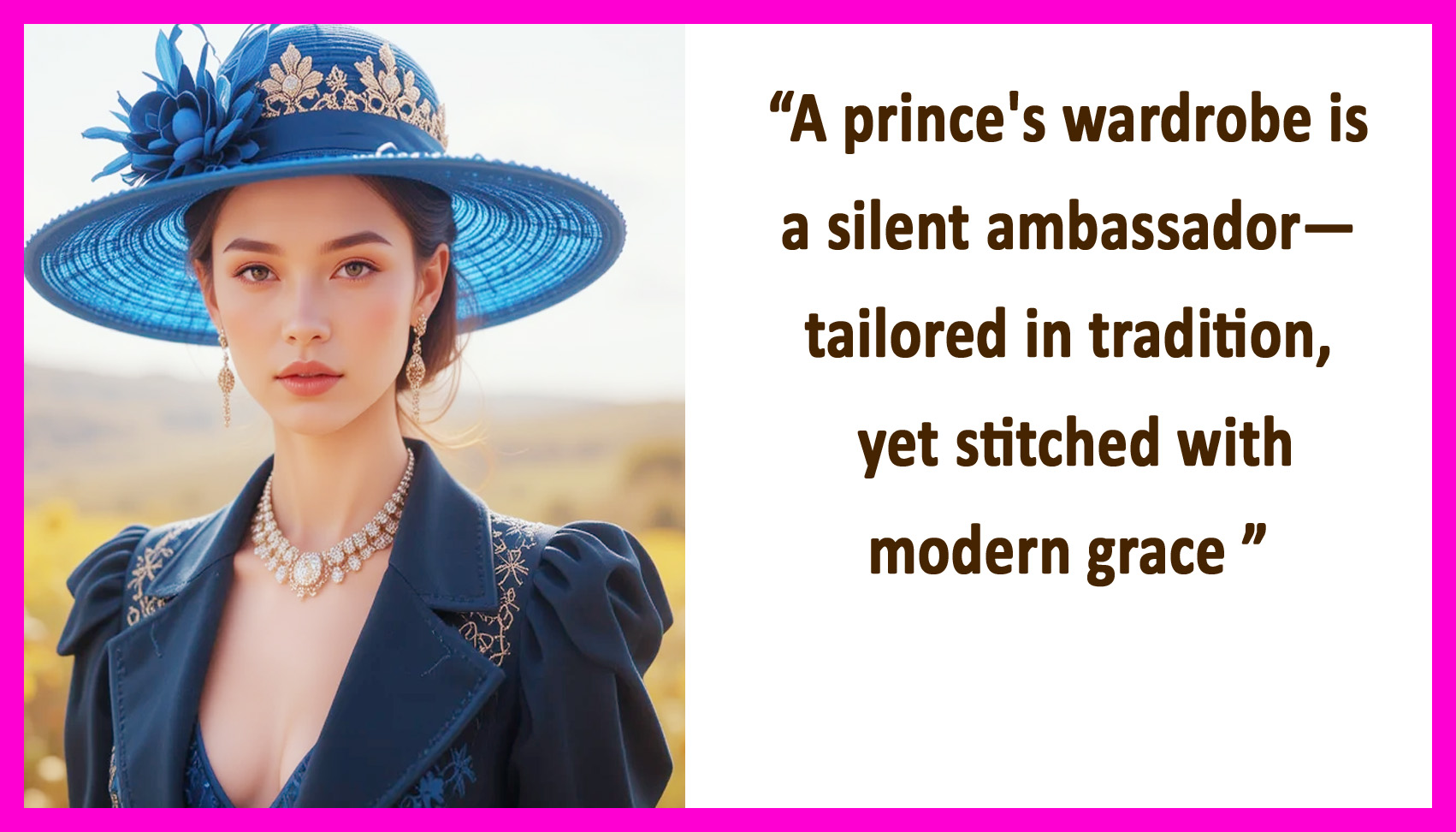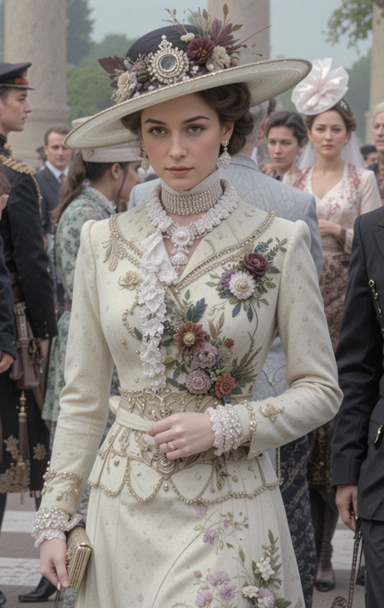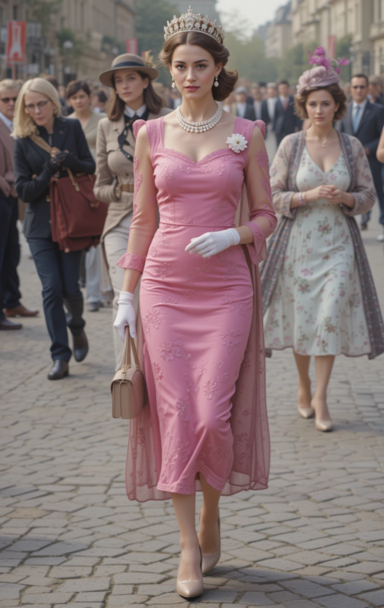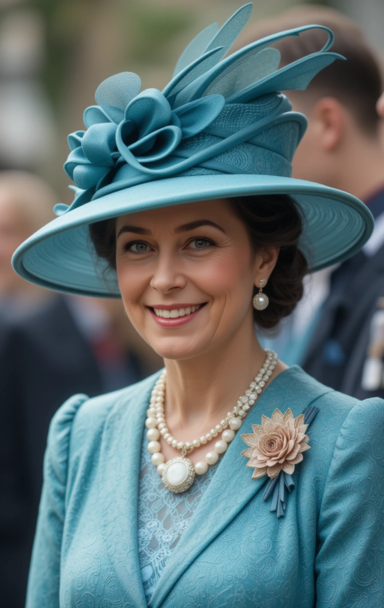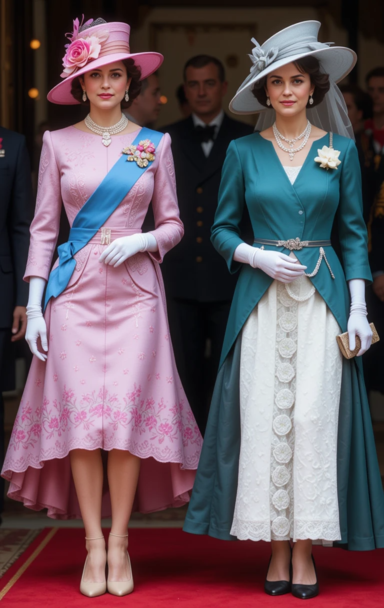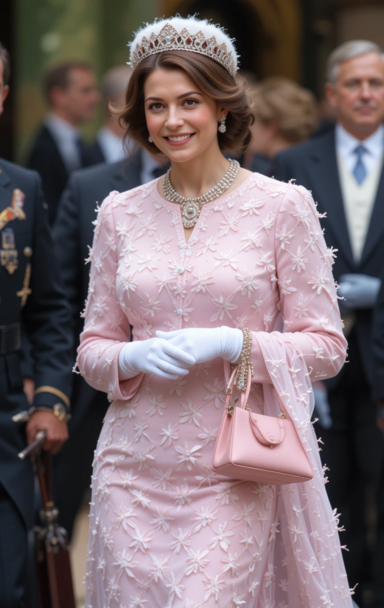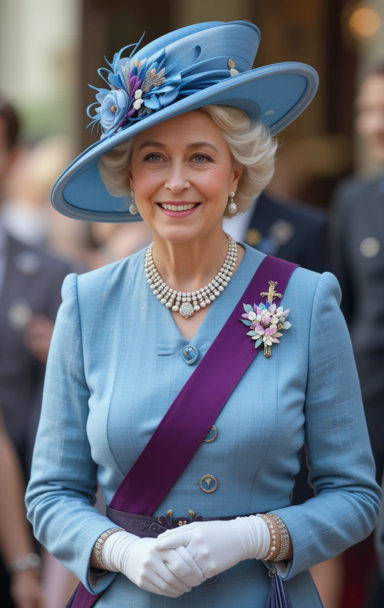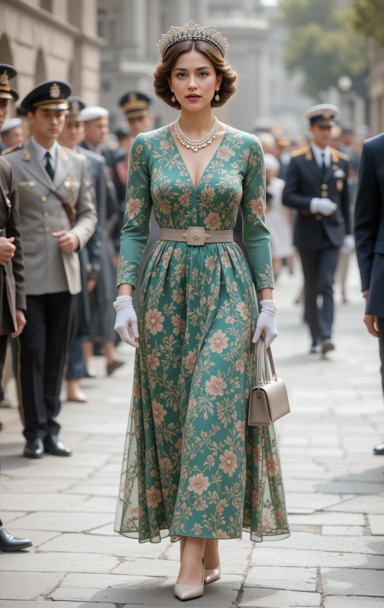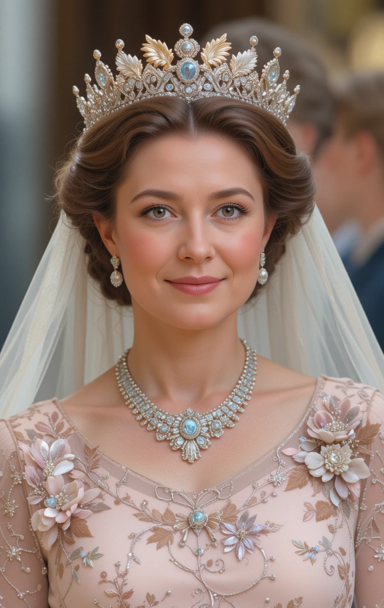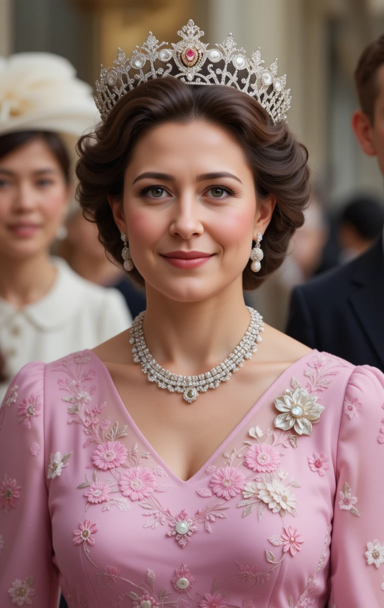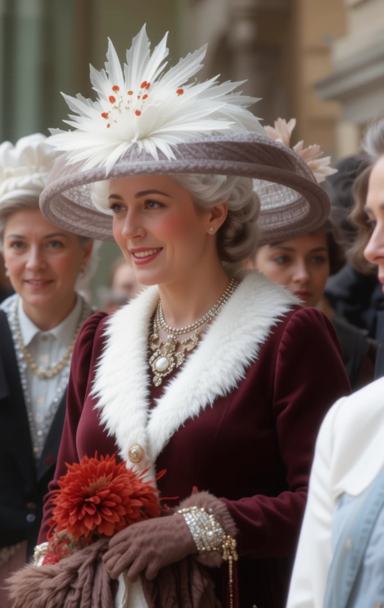Royal Style Rules: What Women of Royalty Never Wear in Public
Royal fashion has captivated the world for centuries, embodying elegance, tradition, and decorum. While trends may evolve and royal wardrobes modernize over time, there are still unspoken—but strictly followed—rules that women of royalty abide by. These guidelines are not merely about looking fashionable; they’re rooted in history, diplomacy, and symbolism. And just as there are styles they embrace, there are also items they scrupulously avoid.
In this article, we delve into what women of royalty never wear in public—and why. Whether it’s due to royal protocol, cultural sensitivities, or the demands of public perception, every sartorial choice made by a princess or queen is deliberate and deeply thought out.
1. No Bright or Neon Colors That Attract Excessive Attention
Although royal women are known for wearing vibrant shades to stand out in a crowd, neon hues are generally considered too garish for public engagements. Royals opt for bright yet tasteful colors like cobalt blue, deep red, emerald green, or mustard yellow. Neon pinks, electric greens, or highlighter oranges, on the other hand, are seen as overly flashy and inappropriate for formal appearances.
These high-voltage colors can be perceived as drawing attention away from the event or cause at hand. Royals are taught that their role is to support, not overshadow, the occasion or people they are visiting.
Why It’s Avoided:
- Considered too loud and showy
- Distracts from the dignity of royal engagements
- Not photogenic under all lighting conditions
2. No Exposed Cleavage
Decency and modesty are crucial pillars of royal dressing. One of the most rigid rules is the avoidance of plunging necklines or visible cleavage. Queen Elizabeth II was known for her preference for higher necklines, and younger royals like Catherine, Princess of Wales, and Queen Máxima of the Netherlands follow suit.
Princess Diana famously used her clutch purse to cover her chest when exiting cars to avoid revealing too much. This practice came to be dubbed the “cleavage clutch,” and it’s a testament to how seriously this particular rule is taken.
Why It’s Avoided:
- Contravenes the royal image of modesty and discretion
- Potential wardrobe malfunctions are prevented
- Maintains decorum during televised and public appearances
3. No Miniskirts or Micro-Length Hemlines
Royal women are expected to keep hemlines appropriate for formal settings, which usually means skirts or dresses should hit no higher than just above the knee. Miniskirts, bodycon mini dresses, or anything thigh-grazing is a strict no-go.
Kate Middleton often wears fitted dresses but always ensures the hemline remains conservative. Even during the warmest summer events, royal women opt for midi or tea-length dresses to remain within the bounds of protocol.
Why It’s Avoided:
- Seen as too revealing or casual for royal duty
- Risks wardrobe mishaps during windy outdoor events
- Out of line with traditional royal femininity and grace
4. No Off-the-Shoulder or Strapless Gowns (Most of the Time)
Though exceptions do exist for evening gala events or state banquets, off-the-shoulder and strapless styles are generally discouraged during daytime royal appearances. These silhouettes are considered too informal and too reminiscent of eveningwear, which doesn’t align with the often conservative expectations of daytime engagements.
Princess Diana and Meghan Markle have occasionally broken this rule during formal events, but these were rare exceptions and almost always in the evening.
Why It’s Avoided:
- Considered too flirtatious or party-appropriate for royal events
- Conflicts with expectations of formality and tradition
- May cause discomfort or controversy among more conservative royal followers
5. No Casual Denim (Except in Rare Private Settings)
Denim is one of the most versatile staples in the fashion world, but for royal women, jeans—especially ripped or distressed styles—are generally not acceptable for public appearances. Denim is associated with casualness and streetwear, which stands at odds with the formality expected of royalty.
Even in more relaxed settings, like a children’s sports event or a countryside visit, royal women pair dark, straight-leg jeans with formal tops, structured blazers, or tailored coats to elevate the look.
Why It’s Avoided:
- Jeans are seen as too casual for most royal appearances
- Distressed or skinny styles can come across as trendy rather than timeless
- Undermines the regal image that royal women are expected to uphold
6. No Flashy Logos or Branding
Royalty avoids wearing visible logos, branding, or slogans on their clothing. This rule serves a dual purpose: to maintain neutrality and to avoid promoting any particular brand or political message unintentionally.
Unlike celebrities who sign brand endorsement deals and sport logo-heavy apparel, royal women must walk a diplomatic line. Wearing something with a large Chanel, Gucci, or Nike logo could be interpreted as favoritism or even product placement.
Why It’s Avoided:
- Royals cannot be seen as commercial or brand ambassadors
- Logos may be perceived as endorsements
- Clothing should speak through its design, not its label
7. No Excessive Sparkle or Sequins During the Day
While dazzling dresses are appropriate for evening galas and black-tie events, sequins, glitter, and rhinestones are a no-no for daytime engagements. The reasoning is simple: sparkle draws too much attention and doesn’t align with the more grounded, service-focused role royal women are expected to embody in their day-to-day work.
Instead, royal women opt for structured, elegant dresses with clean lines and subtle textures. A hint of sheen from silk or brocade is acceptable, but anything reminiscent of a disco ball is left for nighttime events.
Why It’s Avoided:
- Considered too festive for daytime appearances
- Distracts from the purpose of the visit
- May appear showy or ostentatious
8. No Sheer or See-Through Fabrics
Transparency may be trending on runways, but it’s definitely not acceptable in royal wardrobes. See-through lace, mesh panels, or any sheer fabrics are avoided, especially if they reveal undergarments or skin. Even if worn over modest underlayers, sheer outfits can be a point of controversy.
Kate Middleton’s fashion team has even been known to sew extra linings into her dresses to ensure they remain opaque under flash photography.
Why It’s Avoided:
- Can cause unintentional wardrobe malfunctions
- Risks violating modesty standards
- Flash photography can turn sheer fabrics scandalous under certain lighting
9. No Wedges Around the Queen
According to insiders, Queen Elizabeth II had a personal dislike for wedge shoes, especially during formal royal engagements. While younger royals have occasionally worn wedges at garden parties or on off-duty days, they typically steered clear of them when in the Queen’s company.
This style preference has somewhat relaxed after the Queen’s passing, but wedges remain a less favored option, especially during high-profile events.
Why It’s Avoided:
- Queen Elizabeth disliked them, setting an unspoken rule
- Considered less formal than traditional pumps or block heels
- Royal women often favor sleeker footwear for elegance
10. No Overly Trendy or Avant-Garde Fashion
While royal fashion does evolve with time, women of royalty are discouraged from following fast-moving fashion trends or wearing avant-garde outfits that could be considered eccentric or polarizing. The royal wardrobe is built on timeless silhouettes, elegant lines, and neutral tones, not experimental fashion.
This is why you rarely (if ever) see a royal woman wearing extreme cutouts, oversized ruffles, or mismatched patterns—even if they are trending on the runway.
Why It’s Avoided:
- Risks looking dated quickly, which undermines the image of timeless elegance
- Could alienate older or more traditional followers
- Royal fashion is about continuity, not controversy
11. No Excessively High Heels (Above 4 Inches)
Stilettos might be a staple on the red carpet, but royal women generally opt for comfortable, walkable heels. Anything above four inches is rarely seen during public appearances. Comfort and practicality are prioritized, especially during events that require a lot of walking or standing.
Block heels, kitten heels, or elegant courts are the go-to choices. Meghan Markle and Princess Mary of Denmark often wear sleek pointed-toe pumps in moderate heel heights, combining sophistication with functionality.
Why It’s Avoided:
- Difficult to walk in during long public appearances
- High heels can cause awkward posture or missteps
- Practicality is prized in royal dressing
12. No Trousers for Very Formal Events
While pantsuits and trousers are becoming more accepted, royal women still often default to dresses and skirts for formal occasions. Trousers can be seen at semi-formal or business engagements, but for state dinners, weddings, or religious services, skirts and dresses remain the default.
That said, fashion-forward royals like Queen Letizia of Spain and Meghan Markle have worn tailored pantsuits with poise, signaling a slow shift in this traditional rule.
Why It’s Avoided (Traditionally):
- Seen as masculine or too modern for historic occasions
- Dresses are perceived as more regal and ceremonial
- Upholds the image of classic femininity
Final Thoughts: Dressing Like Royalty Is About More Than Fashion
What royal women wear—and just as importantly, what they don’t wear—tells a broader story about tradition, diplomacy, and identity. Every outfit is carefully curated not only to flatter but to send a message: of grace, dignity, and timelessness.
Avoiding certain items isn’t about being out of touch or overly conservative; it’s about respecting a role steeped in history and public responsibility. From skipping neon colors to steering clear of denim and plunging necklines, these royal style rules shape a visual legacy that’s both powerful and poised.
Whether you’re a royal watcher or simply someone looking to refine your wardrobe, understanding what royal women never wear in public offers insight into the art of dressing with purpose—and the grace that comes with it.

